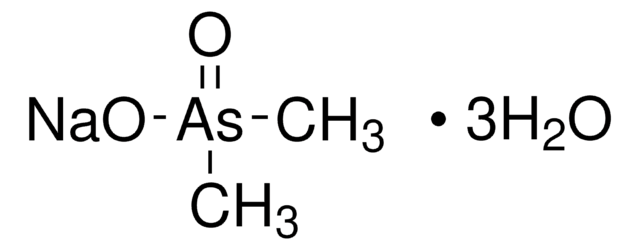X4753
XCT790
≥98% (HPLC), solid
Synonyme(s) :
3-[4-(2,4-Bis-trifluoromethylbenzyloxy)-3-methoxyphenyl]-2-cyano-N-(5-trifluoromethyl-1,3,4-thiadiazol-2-yl)acrylamide
About This Item
Produits recommandés
Niveau de qualité
Pureté
≥98% (HPLC)
Forme
solid
Couleur
yellow
Solubilité
DMSO: ≥10 mg/mL
Température de stockage
2-8°C
Chaîne SMILES
COc1cc(ccc1OCc2ccc(cc2C(F)(F)F)C(F)(F)F)\C=C(/C#N)C(=O)Nc3nnc(s3)C(F)(F)F
InChI
1S/C23H13F9N4O3S/c1-38-17-7-11(6-13(9-33)18(37)34-20-36-35-19(40-20)23(30,31)32)2-5-16(17)39-10-12-3-4-14(21(24,25)26)8-15(12)22(27,28)29/h2-8H,10H2,1H3,(H,34,36,37)/b13-6+
Clé InChI
HQFNFOOGGLSBBT-AWNIVKPZSA-N
Application
- as an estrogen-related receptor (ERR)α inverse agonist in C2C12 myotubes
- as an estrogen-related receptor (ERR)α inverse agonist to elucidate decidualization functionality of ERRα in endometrial embryonic stem cells
- as an autophagy inducer in human neuroblastoma SH-SY5Y and HeLa cell lines.
Actions biochimiques/physiologiques
Mentions de danger
Conseils de prudence
Classification des risques
Aquatic Chronic 4
Code de la classe de stockage
11 - Combustible Solids
Classe de danger pour l'eau (WGK)
WGK 3
Point d'éclair (°F)
Not applicable
Point d'éclair (°C)
Not applicable
Équipement de protection individuelle
Eyeshields, Gloves, type N95 (US)
Certificats d'analyse (COA)
Recherchez un Certificats d'analyse (COA) en saisissant le numéro de lot du produit. Les numéros de lot figurent sur l'étiquette du produit après les mots "Lot" ou "Batch".
Déjà en possession de ce produit ?
Retrouvez la documentation relative aux produits que vous avez récemment achetés dans la Bibliothèque de documents.
Notre équipe de scientifiques dispose d'une expérience dans tous les secteurs de la recherche, notamment en sciences de la vie, science des matériaux, synthèse chimique, chromatographie, analyse et dans de nombreux autres domaines..
Contacter notre Service technique








